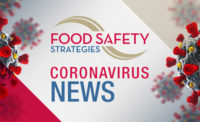Bagged spinach, chocolate, pet food, peanut butter, pot pies, canned chili, ground beef, tomatoes, jalapeños—and more—food system companies have faced a string of foodborne illness outbreaks and associated recalls. This has, at times, both strained the food safety system and also demonstrated how effective it is. Each food or food ingredient presents different challenges when it comes to how to handle a suspected foodborne illness outbreak or product recall. The genesis of a recall adds its own unique challenges. A company that identifies a potential contamination problem through regular quality/safety testing and rapidly issues a targeted recall is in a much different position than a company that is caught up in a commodity wide recall due to a public health investigation. Since a company’s brand and consumer confidence is on the line every time its recall and crisis management plan is called into action, efforts to further strengthen such plans are worth considering. A robust supply chain verification program is one such approach that is consistent with the FDA’s Food Protection Plan (www.fda.gov/oc/initiatives/advance/food/plan.html#1_1).
Supply Chain Verification
All food system companies employ some level of quality assurance and supply chain verification—from HACCP plans to a bill of lading. Fewer companies, however, go beyond the one-step forward, one-step back record keeping required under the 2002 Bioterrorism Act to require source identification, quality assurance, food safety, food defense and related requirements from retail to the farm. Having standards is a step forward, ensuring that those standards are consistently met is what supply chain verification really means. At its core, supply chain verification can be thought of as management by objectives brought to bear on a company’s supply chain. The objectives are relatively straightforward:
• All ingredients or products are as intended, with no accidental, intentional or economic adulteration.
• Ingredient or product handling, transportation and processing maintain product quality and safety.
• Every product or input can be rapidly traced back to its source.
These may sound like "food system for dummies" requirements, but it is how the objectives are translated into sensible and verifiable measures of system performance that they form a more robust approach to crisis prevention and preparedness. The extent that a food firm can drive these objectives and, importantly, the performance measures, all the way through their supply chain will dictate how prepared it is to prevent, and if necessary respond to, accidental or intentional food contamination.
Avoiding Adulteration
Wheat gluten, sunflower oil and infant formula economic adulteration events illustrate how quality standards can apparently be met while still exposing consumers to potential risk. The wheat gluten contamination is a particularly challenging example as the product still met the protein content quality standard because the method generally used is an indirect measure of protein content. The Kjeldahl method specified for apparent protein content measures total nitrogen, so the melamine contaminant enabled the product to meet that standard to the economic gain of the supplier. In some cases, this type of contamination can be anticipated by prior events, but having a quality assurance test protocol that verifies the absence of anything that isn’t supposed to be there isn’t realistic. Until a "Star Trek Tricorder" is available, having the user of the product verify that their supplier is operating in a manner that will yield the desired product is the only reasonable approach. This includes objective measures of food quality and safety, but it is not limited to those.
Third-party inspections/audits are invaluable, but not infallible. If a retailer requires the supplier to undergo unannounced third-party audits, they may very well catch any issues before they cause a problem. If that supplier, however, receives input material that is adulterated, then the audit might not find it until the product has quality or safety issues in the marketplace. One frequent concern with audits is their proliferation rather than their absence, with firms having to undergo multiple audits to meet customer demands. There are efforts underway to come up with coordinated approaches to supplier auditing to help reduce the burden of audits while increasing their utility. Examples include the Global Food Safety Initiative (GFSI) and GMA-SAFE. Participation in these programs will need to increase, however, to meet consumer expectations on the safety of the food supply while also managing the cost of audits given that GMA-SAFE includes 2,103 plants (five inspected in 2007) and GFSI membership is at 415 companies, with only three in China and over 150 of them retailers.
For something like the wheat gluten contamination, periodically conducting more detailed product analyses could also be part of the program. This is especially true if there is information indicating that there have been problems with that supplier or that type of product in the past, as was the case with the contaminated wheat gluten. It may also be appropriate to conduct more detailed product analyses if supply situations require sourcing a product outside of a company’s normal supply chain.
Preventing System Failure
The Castlebury, Cadbury and Peter Pan foodborne illness events are examples of product processing failures leading to consumer illness. These represent a different type of challenge in that a supply chain verification program, even with third-party inspections and related food safety performance requirements, may well not uncover the issues until the product is already in consumers’ hands. From what has been made public of the three events, the challenge here was accepting results from quality assurance as being still quality product, when in fact there was enough unusual data to suggest that a more detailed investigation for potential food safety problems was warranted. When a system is at that point— it has already failed and the consequences are just waiting to roll in. If neither the company nor their supplier emphasizes the importance of food safety and the need to invest in it, efforts are unlikely to yield acceptable results.
In some cases, part of the problem is the cost and reputation penalty of dealing with what may appear to be minor processing or related problems. To borrow from Rudy Guliani’s approach to crime reduction in New York City, if you focus on and fix the small problems that occur regularly (broken windows), you can reduce the possibility of bigger problems in the future (felony crimes). An active supply chain verification program is similar—by identifying and resolving the small quality or other issues that occur randomly, the overall supply chain is increasingly strengthened to avoid food safety issues. These actions also improve the company’s ability to avoid or respond to food defense concerns. While there is always going to a cost associated with an actively managed supply chain verification program, it may often be offset by more favorable insurance rates. More importantly, its utility in allowing a firm to more rapidly respond to an event will reduce the much larger costs associated with an accidental or intentional contamination that does get through. Maple Leaf Foods estimated that the recent recall due to Listeria contamination was going to result in direct costs to the company of over $20 million. The shareholder costs are even greater with its stock price having dropped by over 20% by the end of August since the announcement of the recall, a shift of over $200 million.
Rapid Traceability
The complexity of the recent tomato and pepper recalls and tracebacks demonstrate the challenges in rapidly tracing back certain food items given the nature of the supply chain. The current food system has been optimized for cost, quality and availability of items year round, including things that are either not available year round or are not naturally available. In these cases, systems that enable a company to rapidly reach as far back in the supply chain as is necessary need to be developed. Some companies have already developed systems to allow traceability for certain commodities all the way back to the farm, but there is a cost associated with such approaches and for some items, it isn’t practical. In those cases, supply chain verification may include conducting mock recalls to ensure that, in case of a problem, every participant in the supply chain is able to communicate quickly to get the information from farm to end use.
It is important here, however, to make a distinction between the ability to identify a product or ingredient and recall it and the ability to traceback the source of a foodborne illness outbreak. Outbreak traceback to the food that is the vehicle for the pathogen starts with the uncertainty of the patient interviews and the case control investigation conducted by public health officials. If the bag of spinach associated with an ill person is in their refrigerator, the specificity of the product code on the bag can make both traceback and recall happen quickly. If the only thing that the epidemiological investigation can confirm is that it was ground beef, then the traceback is at a roadblock and the recall choices facing the company or agency are recall everything, or in some cases effectively recalling nothing since there often isn’t any implicated product left in the supply chain by the time the investigation has hit a dead end.
Looking Forward
Supply chain verification isn’t a new concept, but it is more relevant in today’s food and agriculture system than ever before. As the food system continues to globalize and supply chains continue to optimize, being able to verify the reliability of the supply chain back to agricultural inputs is perhaps the most cost-effective way of ensuring the quality and safety of the products that we eat. Because of the constantly evolving and innovating food and agriculture system, a flexible concept like supply chain verification has a better chance of meeting the needs of the consumers than new regulatory frameworks. Efforts such as the GFSI are one approach to drive toward the goal of a reliable food safety system in a cost-effective manner by reducing the cost of maintaining an effective third party audit system but much more work is needed. New technologies and new supply chains will present both opportunities and challenges, but since the consumer no longer can realistically know every farmer, supply chain verification is here to stay.
Shaun Kennedy is the director of the National Center for Food Protection and Defense (NCFPD, an Assistant Professor of Veterinary Population Medicine and the director of Partnerships and External Relations in the College of Veterinary Medicine at the University of Minnesota. He can be reached via www.ncfpd.umn.edu.




